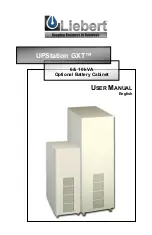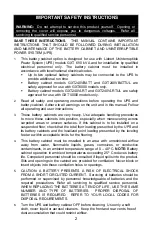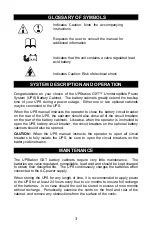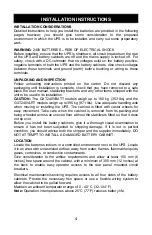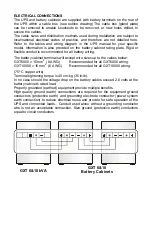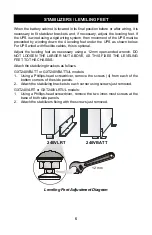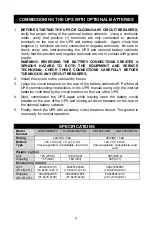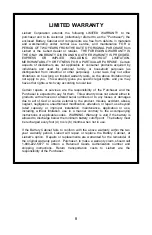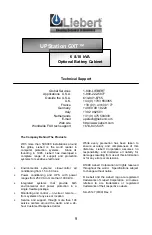
3
GLOSSARY OF SYMBOLS
Indicates Caution: Note the accompanying
instructions
Requests the user to consult the manual for
additional information
Indicates that the unit contains a valve regulated lead
acid battery
Indicates Caution: Risk of electrical shock
SYSTEM DESCRIPTION AND OPERATION
Congratulations on your choice of the UPStation GXT™ Uninterruptible Power
System (UPS) Battery Cabinet. The battery cabinets greatly extend the backup
time of your UPS during a power outage. Either one or two optional cabinets
may be connected to the UPS.
When the UPS manual instructs the operator to close the battery circuit breaker
on the rear of the UPS, the operator should also close all of the circuit breakers
on the rear of the battery cabinets. Likewise, when the operator is instructed to
open the UPS battery circuit breaker, the circuit breakers on the optional battery
cabinets should also be opened.
CAUTION: When the UPS manual instructs the operator to open all circuit
breakers to fully isolate the UPS, be sure to open the circuit breakers on the
battery cabinets also.
MAINTENANCE
The UPStation GXT battery cabinets require very little maintenance. The
batteries are valve regulated, nonspillable, lead acid and should be kept charged
to obtain their designed life. The UPS continuously charges the batteries when
connected to the AC power supply.
When storing the UPS for any length of time, it is recommended to apply power
to the UPS for at least 24 hours every four to six months to ensure full recharge
of the batteries. In no case should the unit be stored in excess of nine months
without recharge. Periodically, examine the vents on the front and rear of the
cabinet, and remove any obstructions from the surface of the vents.
+
-
PbH2SO4

